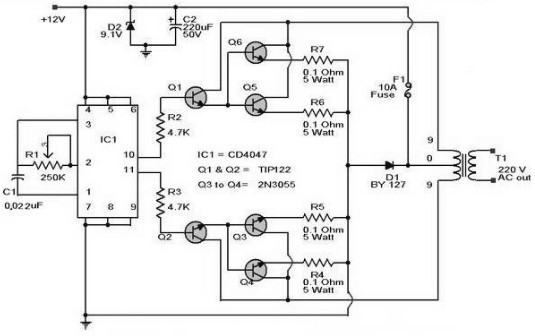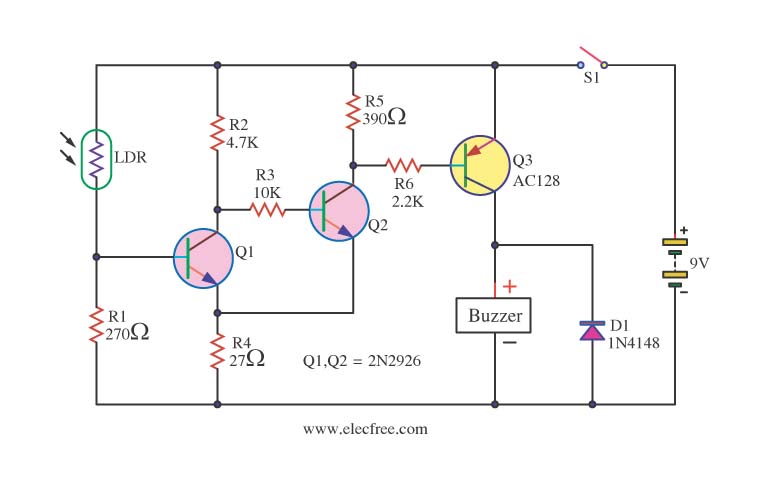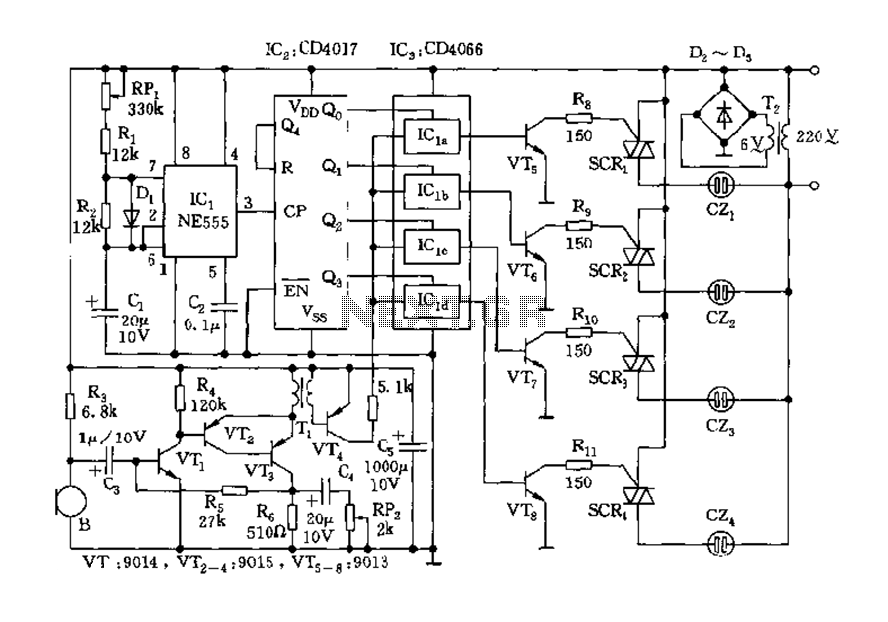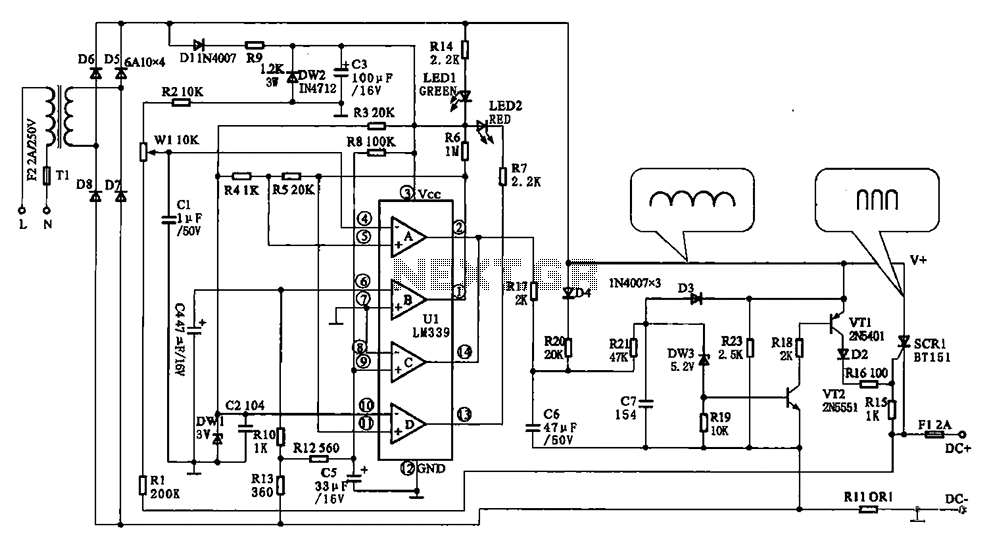
Load Disconnect Switch Circuit
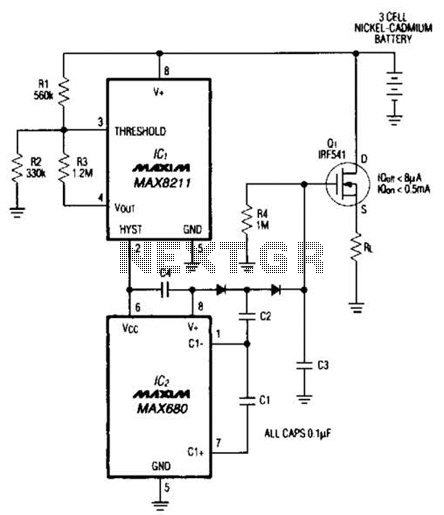
Deep discharge can damage a rechargeable battery. By disconnecting the battery from its load, this circuit halts battery discharge at a predetermined level of declining terminal voltage. Transistor Q1 acts as the switch. The overall circuit draws about 500µA when the switch is closed and about 8µA when the switch is open.
The described circuit is designed to prevent deep discharge of a rechargeable battery, a condition that can lead to irreversible damage and reduced lifespan of the battery. The core component of this circuit is a transistor, designated as Q1, which functions as an electronic switch. The operation of the circuit is based on monitoring the terminal voltage of the battery.
When the battery voltage drops to a specific threshold, indicating a low state of charge, the circuit activates Q1 to disconnect the load from the battery. This action effectively halts any further discharge, preserving the remaining charge in the battery and preventing deep discharge conditions. The circuit is designed to draw a minimal current of approximately 8µA when the switch is open, ensuring that the battery is not subjected to unnecessary drain during idle periods.
Conversely, when the switch is closed, the circuit allows for a higher current draw of about 500µA, enabling normal operation of connected loads. This current draw is essential for the functioning of the circuit's monitoring components, which continuously assess the battery voltage to maintain safe operation.
In practical applications, this circuit can be integrated into battery management systems within devices such as electric vehicles, portable electronics, and renewable energy systems. By implementing this protective circuit, users can significantly enhance the reliability and longevity of rechargeable batteries, ensuring that they operate within safe voltage levels and are not subjected to conditions that could lead to their degradation. Deep discharge can damage a rechargeable battery. By disconnecting the battery from its load, this circuit halts battery discharge at a predetermined level of declining terminal voltage. Transistor Ql acts as the switch. The overall circuit draws about 500A when the switch is closed and about 8 when the switch is open.
The described circuit is designed to prevent deep discharge of a rechargeable battery, a condition that can lead to irreversible damage and reduced lifespan of the battery. The core component of this circuit is a transistor, designated as Q1, which functions as an electronic switch. The operation of the circuit is based on monitoring the terminal voltage of the battery.
When the battery voltage drops to a specific threshold, indicating a low state of charge, the circuit activates Q1 to disconnect the load from the battery. This action effectively halts any further discharge, preserving the remaining charge in the battery and preventing deep discharge conditions. The circuit is designed to draw a minimal current of approximately 8µA when the switch is open, ensuring that the battery is not subjected to unnecessary drain during idle periods.
Conversely, when the switch is closed, the circuit allows for a higher current draw of about 500µA, enabling normal operation of connected loads. This current draw is essential for the functioning of the circuit's monitoring components, which continuously assess the battery voltage to maintain safe operation.
In practical applications, this circuit can be integrated into battery management systems within devices such as electric vehicles, portable electronics, and renewable energy systems. By implementing this protective circuit, users can significantly enhance the reliability and longevity of rechargeable batteries, ensuring that they operate within safe voltage levels and are not subjected to conditions that could lead to their degradation. Deep discharge can damage a rechargeable battery. By disconnecting the battery from its load, this circuit halts battery discharge at a predetermined level of declining terminal voltage. Transistor Ql acts as the switch. The overall circuit draws about 500A when the switch is closed and about 8 when the switch is open.
